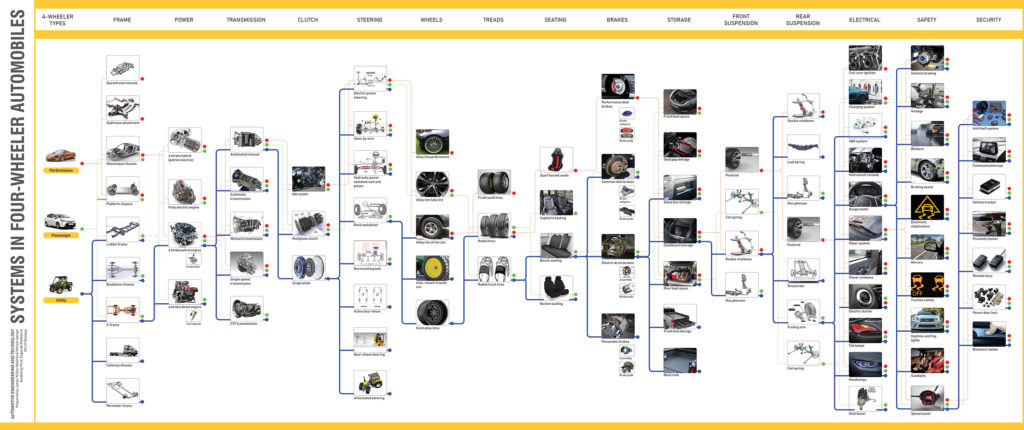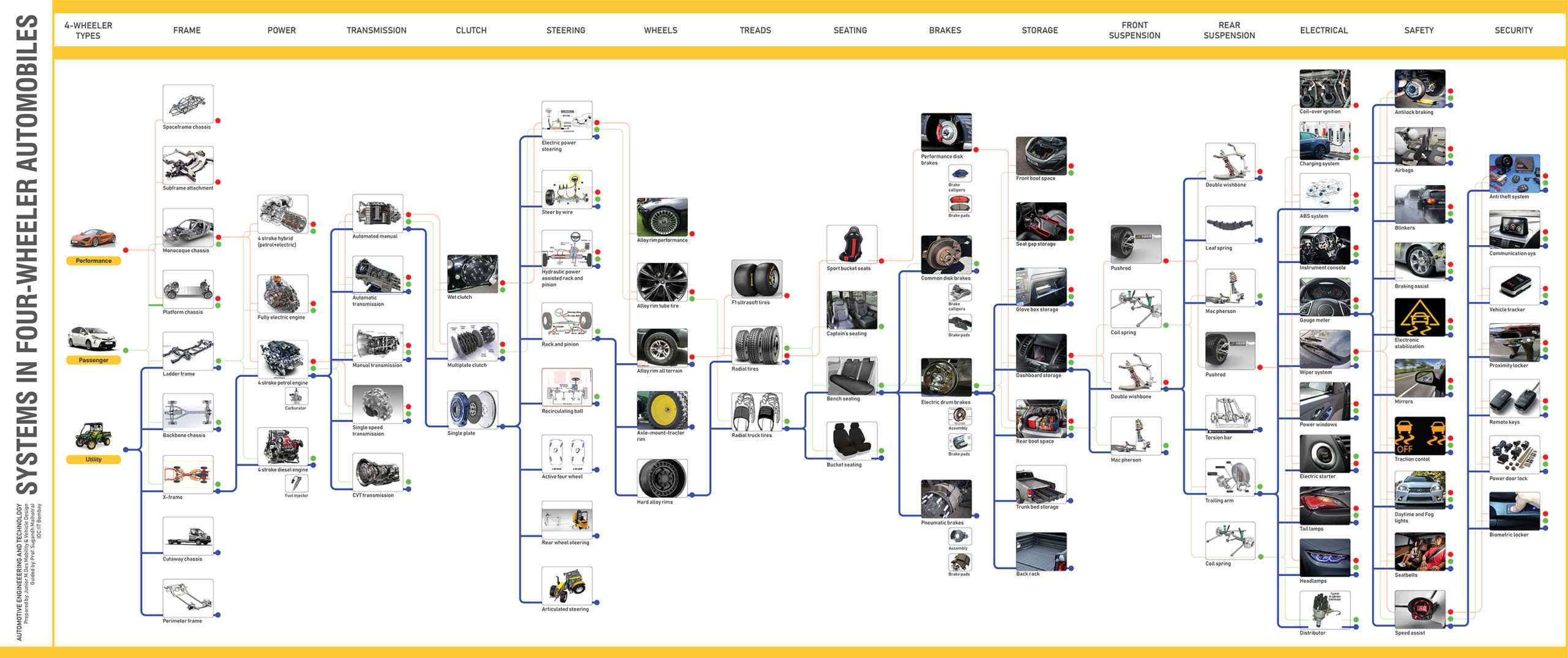Automobiles are similar to any living organisms in many ways. Many systems work together to provide the driver with a seemless, safe, memorable traveling experience. Researchers working in technology and engineering disciplines focus on specific interventions and its related details. However from an automotive system level viewpoint, a small change or an upgrade in one technology or one small sub-system may have a rippling effect on other systems. There is a need to observe the entire automotive on a macro-system level and acknowledge the connections and interrelations between various systems. This would lead to plausible simulations to create scenarios of future automobiles.
The morphological chart gives us a checklist to follow through and come up with alternate systems to fill-in the voids that may become redundant when a system is replaced or removed.
For example, if we aim to go for an electric vehicle, we can replace/remove existing systems that will become redundant such as fuel tank (replaced by a battery pack), transmission (motor itself will be able to handle power transmission). Similarly scenarios can be prepared for future automotive solutions such as Hydrogen fuel cell powered technology powered automobile, nuclear fission based automobile, etc.
This morphological chart explains four-wheeler automobiles in three broad categories: Performance, Passenger and Utility. You will observe how the choice of sub-systems will change depending upon the choice of function as we switch between these categories of vehicles.
Chart 1: All configurations included (Performance, Passenger, Utility)
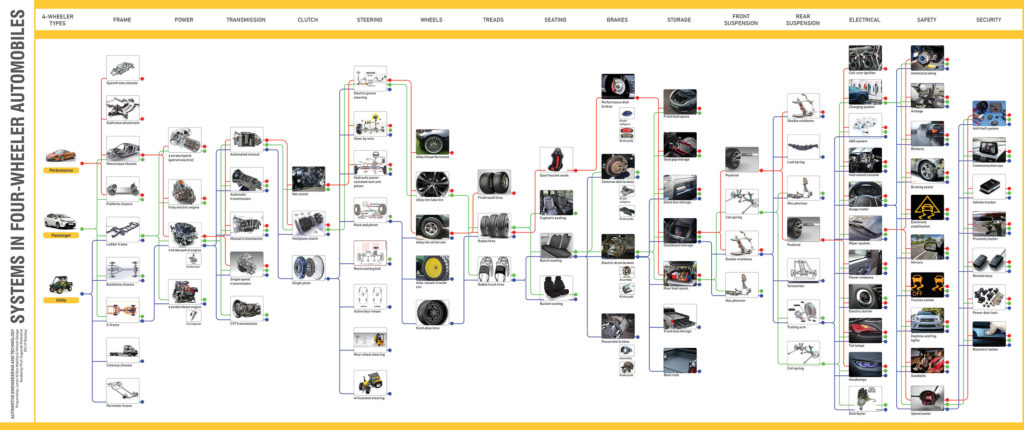
Chart 2: Performance Vehicles
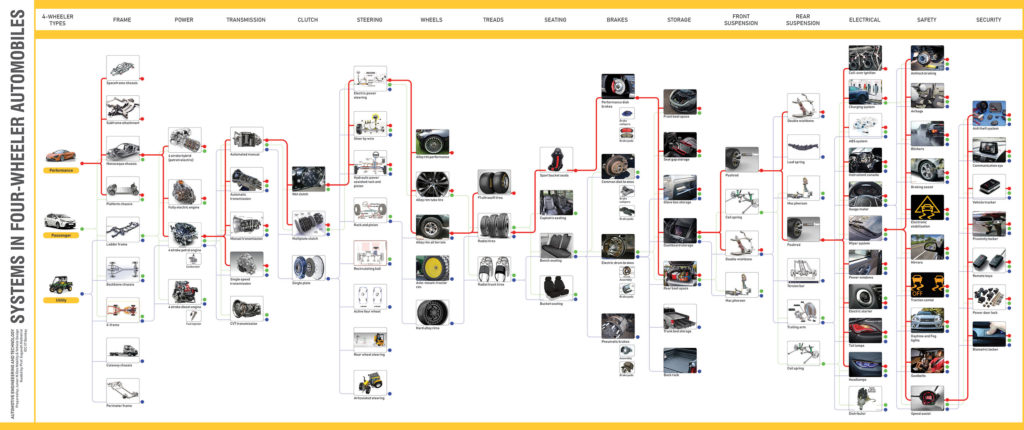
Chart 3: Passenger Vehicles
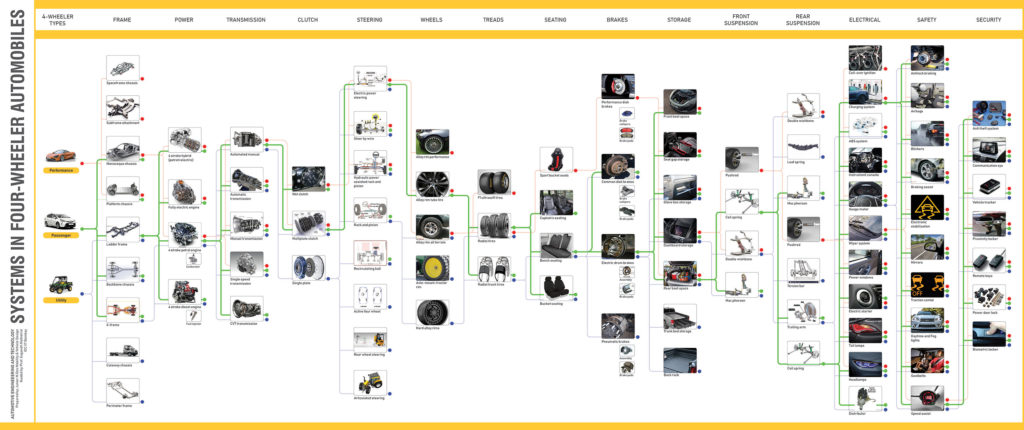
Chart 4: Utility Vehicles
